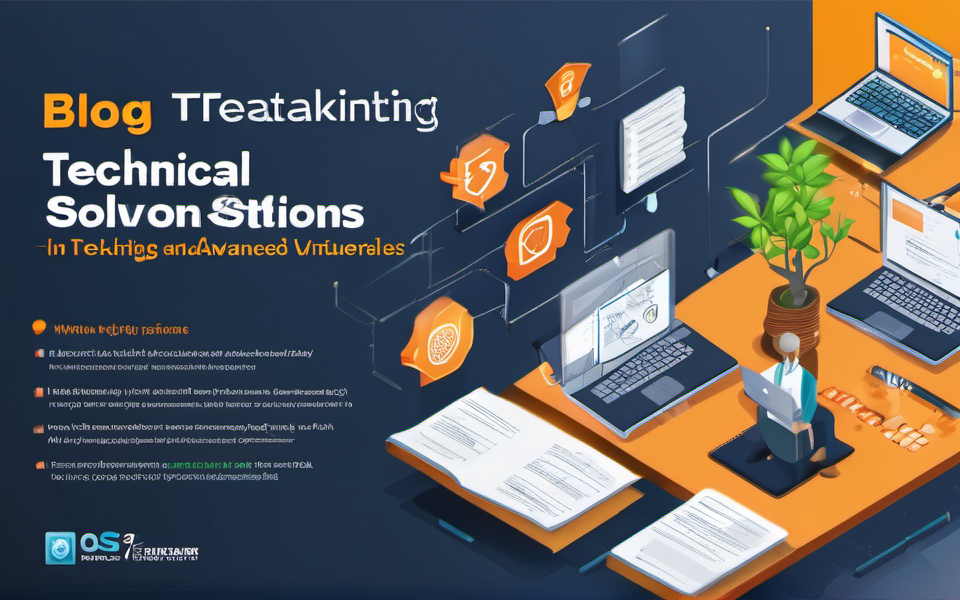Imagine a world where every digital transaction, every email, every online interaction is as secure as a bank vault. You wouldn’t have to worry about data breaches, identity theft, or ransomware attacks. That world might sound like science fiction, but it’s closer than you think. Advanced technological solutions are revolutionizing the way we secure our online world. These innovations offer unprecedented protection against ever-evolving cybersecurity threats.
Unveiling the Future of Cybersecurity: From Prevention to Proactive Defense
Gone are the days of simply patching up vulnerabilities after an attack. Today, we’re moving towards a proactive approach that predicts and prevents threats before they even materialize. This shift requires sophisticated solutions that utilize artificial intelligence, machine learning, and big data analysis to identify patterns, detect anomalies, and predict potential attacks.
Leveraging Artificial Intelligence and Machine Learning
Imagine an AI-powered system that analyzes millions of data points in real-time to identify and block malicious activities. This is exactly what’s happening with AI-powered security platforms. These systems continuously learn from data, adapting to new threats and evolving attack vectors. Machine learning algorithms can be trained to recognize specific attack patterns and signatures, making them highly effective in identifying and neutralizing sophisticated threats that may go undetected by traditional methods.
The Power of Big Data in Cybersecurity
Cybersecurity solutions are now taking advantage of the power of big data analysis. By analyzing massive datasets from diverse sources, these systems gain a comprehensive understanding of an organization’s security posture. They can identify weak points in the infrastructure, detect suspicious activities across various devices and platforms, and ultimately, anticipate threats before they escalate.
Zero-Trust Security: Building an Impenetrable Fortress
Zero-trust security is a fundamental paradigm shift in how we approach cybersecurity. It eliminates the inherent trust in users, devices, and networks, requiring strict verification and authentication at every access point. This means every user, every application, every device needs to be verified before being granted access to any system.
Implementing Zero-Trust Security
Implementing a zero-trust security framework involves several crucial steps:
- Micro-segmentation: This involves breaking down the network into smaller segments, restricting access to resources based on user identities and roles.
- Multi-factor Authentication (MFA): Adding an extra layer of security by requiring users to provide multiple forms of identification (password, fingerprint, OTP).
- Access Control Lists (ACLs): This method ensures that users only have access to the data and resources they need to perform their tasks, reducing the risk of unauthorized access.
- Continuous Monitoring and Analytics: Implementing real-time monitoring and analysis of user behavior, device activity, and network traffic is crucial for detecting anomalies and responding promptly to security breaches.
Securing the Future with Advanced Encryption
Encryption has long been a cornerstone of cybersecurity, but new innovations are pushing the boundaries of protection. We are entering the era of homomorphic encryption – a game-changing technology that allows computation on encrypted data without decrypting it first. This is like doing complex calculations while keeping your data under lock and key.
The Benefits of Homomorphic Encryption
Homomorphic encryption offers several benefits:
- Enhanced Privacy: Protecting sensitive information, even when it’s processed or shared with third parties.
- Data Security: Minimizing the risk of data breaches, even if hackers gain access to encrypted data.
- Increased Compliance: Meeting stricter data privacy regulations (like GDPR).
Navigating the Dynamic Landscape of Cyber Threats
As cybercriminals become more sophisticated, cybersecurity solutions must evolve accordingly. The ever-evolving threat landscape demands proactive defense, advanced technologies, and a commitment to staying ahead of the curve. This means:
- Staying informed about emerging threats: Continuously monitor threat intelligence reports, research on new attack vectors, and industry best practices to ensure your systems are equipped to handle current and future threats.
- Investing in security training and awareness: Empower employees to recognize phishing attacks, implement safe password practices, and stay vigilant against social engineering attempts.
- Regular security audits and vulnerability assessments: Conducting routine security audits and vulnerability assessments helps to identify and fix vulnerabilities in a timely manner, mitigating the risk of breaches.
Key Takeaways
The future of cybersecurity is about building a more secure digital world through advanced technologies, proactive defenses, and continuous improvement. It’s about adopting innovative solutions like artificial intelligence, zero-trust security, and homomorphic encryption to stay ahead of emerging threats. By understanding the current landscape and implementing appropriate measures, we can create a digital world that is both secure and accessible for everyone.




